Ease muscle tension and support recovery with effective cool-down routines
Cool-down exercises
Cool-down exercises are essential for transitioning your body from high-intensity activity to a restful state. These exercises help your muscles relax, improve flexibility, and speed up the recovery process. Whether you're finishing a strength workout, cardio session, or HIIT, dedicating time to a proper cool-down helps lower heart rate, reduce muscle soreness, and improve flexibility for the next session.
Pick your muscle groups
Pick your equipment
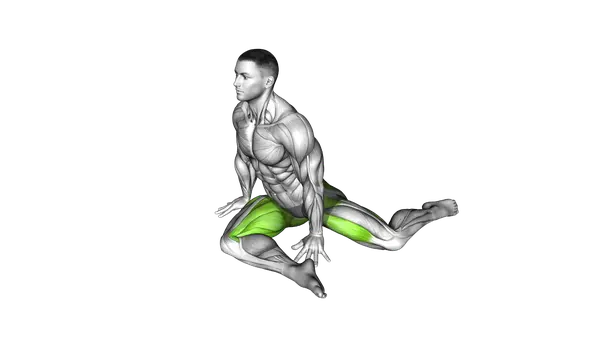
90/90 Stretch
The 90/90 Stretch is a gentle yet highly effective mobility exercise that targets multiple areas of the lower body simultaneously, making it perfect for beginners looking to improve their hip function. This versatile stretch primarily engages the glutes and hip flexors, providing a deep release in areas that commonly become tight from prolonged sitting or intense workouts. As both a recovery tool and preparatory movement, the 90/90 Stretch earns its place in cool-down routines, recovery sessions, and warm-ups alike. Its ability to open the hips in multiple planes of motion makes it particularly valuable before activities requiring hip mobility, such as squats, lunges, or athletic movements that involve changing direction. What makes the 90/90 particularly special is how it combines stretching and mobility work in one efficient position. The stretch addresses external and internal rotation of the hips simultaneously, which helps restore natural movement patterns that may become restricted through daily activities or exercise. Many fitness professionals consider this movement a cornerstone of hip maintenance, especially for those dealing with discomfort or restrictions in their hip complex. Regular practice of the 90/90 Stretch can progressively improve your overall hip mobility, potentially enhancing athletic performance and reducing the risk of compensatory movements that might lead to injury. The beauty of this stretch lies in its simplicity and adaptability: it can be modified to accommodate different flexibility levels, making it accessible to virtually anyone. For optimal results, the 90/90 Stretch works best when performed consistently as part of a comprehensive mobility routine. Many find it beneficial to incorporate this movement daily, particularly after long periods of sitting, to reset hip positioning and maintain healthy movement patterns in this crucial joint complex.
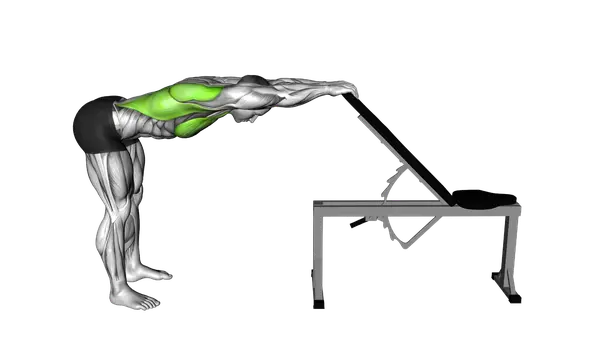
Back Pec Stretch
The Back Pec Stretch targets the pectoral muscles (chest) and anterior deltoids (front shoulders), providing essential relief for these commonly tight areas. This accessible stretch helps counteract the forward-hunched posture many of us develop from desk work, driving, or looking at mobile devices. By opening the chest and stretching the front of the shoulders, this movement helps restore natural alignment and improves overall upper body function. For those new to fitness, the Back Pec Stretch serves as an excellent introduction to upper body mobility work. It requires no equipment and can be modified to match any flexibility level. Beginners often experience immediate relief and a noticeable improvement in posture, making it a highly rewarding stretch for newcomers. The simplicity of this stretch also helps build body awareness – a fundamental skill for more advanced exercise progressions. This stretch primarily targets the pectoral major and minor muscles along with the anterior (front) deltoids. These muscle groups tend to become shortened and tight from daily activities like typing, driving, and even sleeping positions. Regular stretching of these areas helps maintain chest flexibility, shoulder mobility, and can potentially reduce upper back and neck tension that stems from chronically tight pecs and front shoulders. The Back Pec Stretch proves versatile enough for multiple phases of your workout routine. During warm-ups, it helps prepare the upper body for movements requiring shoulder mobility. As part of a cool-down, it assists in releasing tension built during chest or push exercises. For recovery days, this stretch promotes blood flow to healing tissues and maintains flexibility between training sessions. As both a stretching and mobility exercise, the Back Pec Stretch contributes to better movement patterns throughout daily life and during other exercises. Regular practice improves thoracic extension, enables better overhead reaching, and can enhance performance in pressing movements by ensuring appropriate muscle length-tension relationships.
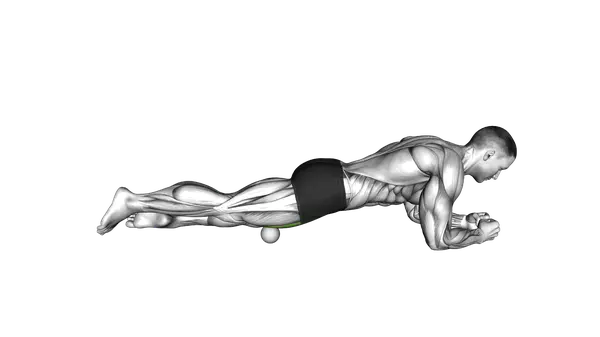
Ball Rolling for Front Thigh
Ball Rolling for Your Thigh Muscle is a simple and effective way to help relieve muscle tightness in the front of your thigh. This easy technique is perfect for beginners and works great before or after exercise. All you need is your body weight and a small firm ball, like a tennis ball or lacrosse ball. The muscle you're working on (called the rectus femoris) is special because it connects both your hip and knee, which means it gets tight easily from sitting too long or being active.When you roll this muscle with a ball, it's like giving yourself a deep massage that helps loosen up knots and tight spots in your muscle. The pressure from the ball helps get more blood flowing to the area, which brings in good nutrients and helps remove waste that builds up in your muscles. This makes you feel less sore and helps you recover faster after exercise. The ball gives you more focused pressure than other tools, so you can really target those stubborn tight spots.Using a ball regularly on this thigh muscle can make your legs feel much better and move more easily. When you release the tightness, you might notice it's easier to bend your knees, your hips feel looser, and everyday movements feel smoother. People who exercise often find they can squat deeper, run more comfortably, and jump better after making this part of their routine. The ball lets you work on exactly the spots that feel tight instead of just rolling over everything.The great thing about using a ball for this muscle work is how simple and effective it is. Whether you're getting ready to exercise, cooling down afterward, or just want to feel better on a day off, this technique really helps. Since the ball is smaller than other massage tools, you can pinpoint exactly where you feel tight and work on those specific areas. Many healthcare professionals recommend this as a way to prevent common leg and knee problems, making it useful for anyone who wants to feel better and move more easily, regardless of how active they are.
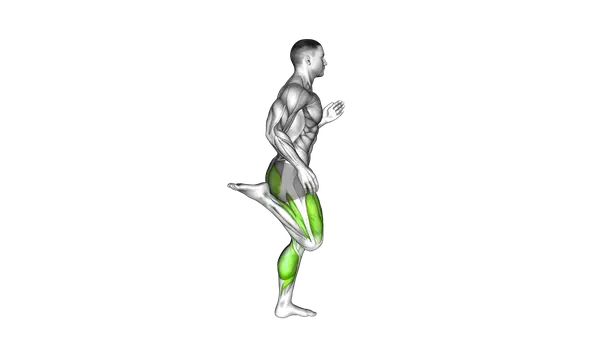
Butt Kicks
Butt kicks are a dynamic, high-energy exercise that serves as an excellent addition to any fitness routine, particularly for beginners looking to build lower body strength and cardiovascular endurance. This accessible movement primarily targets the hamstrings while also engaging the glutes, making it a focused yet comprehensive lower body exercise that delivers impressive results with proper form and consistent practice. Many fitness professionals incorporate butt kicks into HIIT circuits due to their ability to quickly elevate heart rate and create metabolic demand without complex movement patterns. However, their versatility extends beyond intense training sessions, as they also function perfectly as part of a thorough warm-up sequence to prepare the posterior chain for more demanding exercises, or as a cool-down activity to facilitate recovery while maintaining elevated circulation. The beauty of butt kicks lies in their dual benefits – simultaneously developing muscular endurance in the hamstrings and glutes while providing an effective cardio stimulus that improves aerobic capacity. The rhythmic nature of this movement challenges your cardiovascular system similarly to jogging but with increased posterior chain activation, creating a more balanced lower body workout that complements other common exercises like high knees or jumping jacks. For those monitoring their fitness progress, butt kicks offer a measurable benchmark – tracking improvements in speed, duration, and technical execution provides tangible evidence of developing endurance and coordination. As your fitness level advances, you can naturally increase the intensity by performing the movement with greater speed or for extended durations without needing to modify the basic exercise pattern. Whether incorporated into a dedicated training session or used as a quick energy-boosting activity during a busy day, butt kicks deliver significant physiological benefits while remaining accessible to virtually any fitness level. Their minimal space requirements and zero-equipment nature make them a practical option for home workouts, travel fitness, or outdoor training sessions.
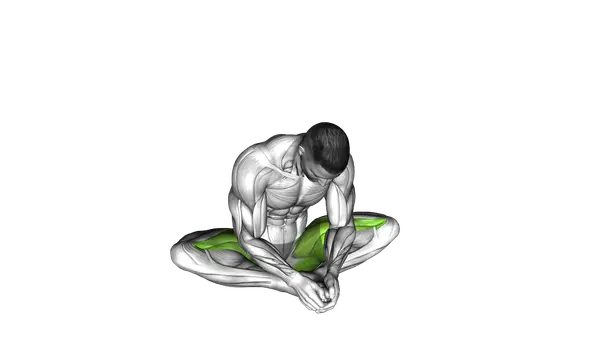
Butterfly Yoga Pose
The Butterfly Pose, also known as Baddha Konasana in Sanskrit, is a fundamental yoga position that offers tremendous benefits for practitioners of all experience levels, particularly beginners seeking to improve their flexibility and mobility. This gentle seated posture primarily targets the adductors—those inner thigh muscles that often become tight from our modern sedentary lifestyle—making it an excellent addition to any stretching routine. The beauty of the Butterfly Pose lies in its versatility. It serves wonderfully as part of a warm-up sequence, preparing the hips and groin for more demanding movements by increasing blood flow to these areas. Equally, it shines as a recovery or cool-down exercise, helping to release tension accumulated during more intense activities while promoting a sense of groundedness and calm. What makes this pose particularly accessible is how it naturally encourages proper alignment while allowing practitioners to control the intensity of the stretch according to their own flexibility level. The gentle opening sensation along the inner thighs creates space in an area where many people experience chronic tightness, potentially improving overall hip mobility and posture with regular practice. Beyond the physical benefits, the Butterfly Pose offers a moment of mindful connection with your body. The subtle sensations that arise during this stretch provide an opportunity to practice awareness and breathing into areas of tension—skills that translate to both athletic performance and everyday movement patterns. As a mobility-enhancing posture, the Butterfly supports healthy hip function, which serves as the foundation for many daily activities and athletic movements. The gentle nature of this stretch makes it appropriate for nearly everyone, from office workers combating the effects of prolonged sitting to athletes looking to maintain supple, responsive muscles for optimal performance. This timeless pose demonstrates that sometimes the simplest movements yield the most profound benefits.
Built for Progress
Take the Guesswork
Out of Training
Create personalized AI-powered workout plans that evolve with you. Train smarter, track every rep and keep moving forward.
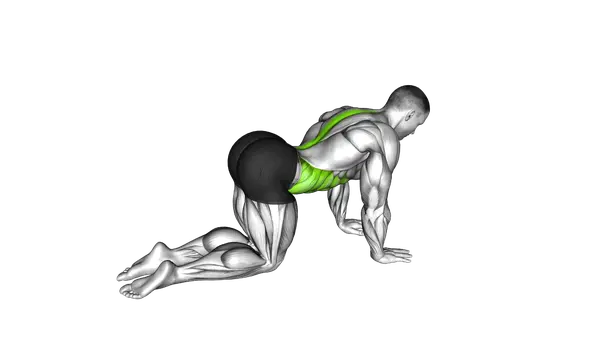
Cat Cow Stretch
The Cat Cow Stretch represents one of the most accessible yet effective mobility exercises in any fitness routine, perfect for beginners while remaining valuable for exercisers at all levels. This gentle, flowing movement primarily targets the erector spinae muscles that run along your spine and your abdominal muscles, creating a beautiful balance of engagement and release through your entire core structure. What makes the Cat Cow particularly versatile is its application across various phases of your workout journey. As a warm-up element, it awakens the spine and central nervous system, preparing your body for more intense movements to come. During recovery periods, it serves as a reset button, allowing you to catch your breath while maintaining movement. And as a cool-down component, it helps transition your body back to a resting state while releasing tension accumulated during exercise. The beauty of this stretch lies in its dual focus on both stretching and mobility. While it lengthens tight muscles along the back and abdomen, it simultaneously encourages articulation through each vertebra, promoting healthier spinal function. This combination makes it especially valuable in our modern world, where prolonged sitting and device use often lead to compressed spines and restricted movement patterns. Regular incorporation of the Cat Cow can contribute to improved posture, reduced back discomfort, and enhanced awareness of your core muscles. The gentle nature of the movement makes it accessible even on days when energy levels are low, ensuring you can maintain some form of movement practice regardless of circumstances. For those dealing with stress, the rhythmic pairing of movement with breath in the Cat Cow offers meditative benefits beyond the physical, creating a mind-body connection that grounds you in the present moment. This makes it not just an exercise for physical wellness, but a holistic practice supporting overall wellbeing.
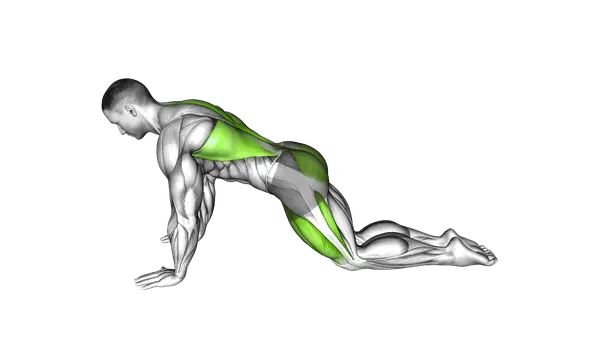
Child's Pose
Child's Pose, often referred to as the resting pose in yoga practice, offers an accessible entry point for beginners while providing profound benefits for more advanced fitness enthusiasts. This gentle position primarily targets the erector spinae: those important muscles running along your spine, while also providing a mild release for the glutes, making it perfect for anyone experiencing tightness in the lower back region. What makes Child's Pose particularly valuable is its versatility within a fitness routine. As a recovery position, it allows the body to reset between more challenging exercises, bringing the heart rate down while maintaining engagement. During cool-down sequences, it helps transition the body from an active state to rest, signaling to your nervous system that the intense work is complete. Alternatively, incorporating it into your warm-up routine gently awakens the spine and prepares the back muscles for more demanding movements ahead. The pose primarily functions as a stretching exercise, creating gentle elongation through the entire posterior chain from the ankles to the neck. This stretching quality makes it exceptional for releasing tension that accumulates throughout the day, especially for those who spend hours sitting at desks. Beyond simple stretching, Child's Pose enhances mobility by encouraging the natural articulation of the spine and promoting healthy range of motion in the hips. Perhaps what's most remarkable about Child's Pose is its dual nature: simultaneously calming the mind while physically preparing the body. The position naturally encourages deeper breathing patterns, which activates the parasympathetic nervous system. This physiological response helps reduce cortisol levels and creates a moment of mindfulness even within a physically-focused training session. For athletes dealing with recovery from more intense workouts, this meditative quality offers both mental and physical restoration.
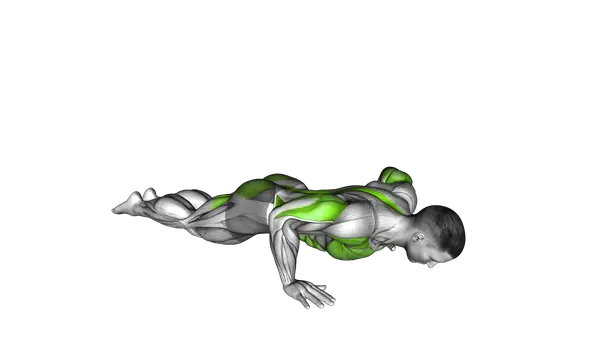
Cobra Yoga Pose
The Cobra Pose, or Bhujangasana in Sanskrit, is a fundamental yoga position perfect for beginners seeking to develop core strength and spinal flexibility. This gentle backbend primarily engages the erector spinae muscles along your spine while providing a complementary stretch for the abdominals, making it an excellent balanced movement for core development. As a versatile component of any yoga practice, Cobra Pose serves multiple functions depending on when you incorporate it. During warm-ups, it gently awakens the spine and prepares the body for more intense movements by increasing blood flow to the core and back muscles. When used in recovery or cool-down sequences, it helps release tension built up during more strenuous exercises, allowing the body to gradually return to its resting state while maintaining awareness of proper alignment. The beauty of Cobra lies in its dual nature as both a stretching and mobility exercise. While it creates a wonderful opening through the chest and shoulders, simultaneously stretching the abdominals and hip flexors, it also promotes healthy spinal mobility by encouraging gentle extension through the thoracic and lumbar regions. This combination makes it particularly valuable in counteracting the effects of prolonged sitting and hunched postures that dominate modern life. Regular practice of the Cobra Pose can contribute to improved posture, reduced lower back discomfort, and enhanced breathing capacity as the chest expansion allows for fuller inhalations. The subtle strengthening effect on the back muscles also provides greater support for everyday movements and other physical activities. Many practitioners find that incorporating this pose into their routine brings not only physical benefits but also a sense of energetic opening and mental clarity that comes from mindful movement and conscious breathing. As with any yoga posture, the benefits of Cobra come not from pushing to extremes but from finding your appropriate edge and breathing into the sensations with awareness and respect for your body's unique structure and needs.
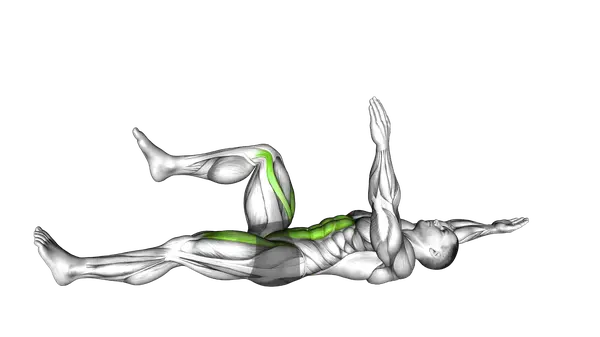
Dead Bug
The Dead Bug exercise stands as a cornerstone of core training, offering tremendous benefits with minimal equipment needs. This deceptively simple movement targets the deep abdominal muscles, particularly the transverse abdominis, while simultaneously engaging the entire core complex. As a beginner-friendly exercise, the Dead Bug provides an accessible entry point for those new to fitness while still delivering substantial results for more experienced individuals. What makes the Dead Bug particularly valuable is its ability to strengthen the core while maintaining a neutral spine position. This makes it exceptionally effective for those recovering from back injuries or looking to build foundational strength without compromising spinal health. The controlled nature of the movement allows for precise muscle activation, helping to establish the mind-muscle connection so crucial for effective abdominal training. Perfect for warm-up routines, the Dead Bug primes your core for more demanding exercises by activating the stabilizing muscles that protect your spine during movement. Similarly, incorporating this exercise into your cool-down can reinforce proper movement patterns and core engagement when the body is already warmed up, potentially enhancing neuromuscular learning. During recovery phases of training, the Dead Bug serves as an ideal low-impact option that maintains core strength without overtaxing the nervous system. The exercise's focus on contralateral limb movement—opposing arm and leg coordination—also makes it valuable for improving functional movement patterns that translate to everyday activities and sports performance. Perhaps most importantly, the Dead Bug excels at training anti-extension, teaching your body to resist arching the lower back—a skill crucial for both athletic performance and injury prevention. As you progress in your fitness journey, this fundamental exercise can be modified in countless ways to continue challenging your core stability, making it a timeless addition to any comprehensive fitness program.
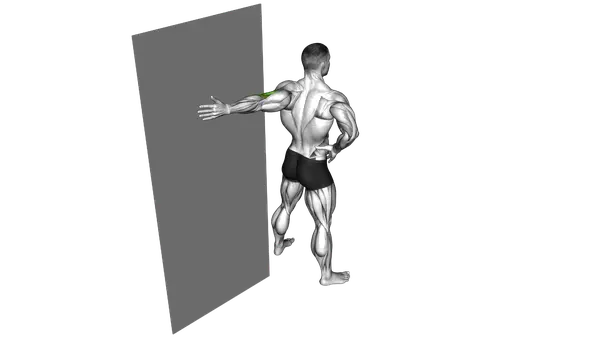
Elbow Flexor Stretch
The Elbow Flexor Stretch targets the biceps and forearm muscles, offering an excellent way to improve flexibility in your arms while promoting better range of motion in your elbow joints. This beginner-friendly stretch is perfect for anyone looking to enhance their upper body mobility without requiring any special equipment or advanced knowledge. When incorporated into your warm-up routine, the Elbow Flexor Stretch helps prepare your muscles for the demands of your upcoming workout by increasing blood flow to the biceps and forearm region. This preparatory stretching can potentially reduce your risk of strain during exercises that heavily engage these muscle groups, such as pull-ups, rows, or bicep curls. Many fitness enthusiasts find this stretch particularly valuable during cool-down sessions, as it helps alleviate the tightness that often develops in the biceps and forearms after resistance training. Regular practice can contribute to maintaining optimal muscle length and may assist in reducing post-workout soreness in these areas. Beyond its immediate benefits for workout preparation and recovery, consistent elbow flexor stretching contributes to better overall arm mobility. This improved mobility can translate to more efficient movement patterns in daily activities that require arm extension and flexibility, from reaching overhead to carrying objects. The Elbow Flexor Stretch represents an essential component of a comprehensive stretching regimen, especially for individuals who perform repetitive arm movements in sports or daily life. Athletes engaged in activities like climbing, tennis, or baseball often emphasize this stretch to maintain functional arm mobility and potentially reduce overuse injuries. For maximum benefit, consider incorporating the Elbow Flexor Stretch into multiple phases of your fitness routine – as part of your dynamic warm-up, between strength training sets for active recovery, and during your post-workout stretching session to promote muscle recovery and relaxation.
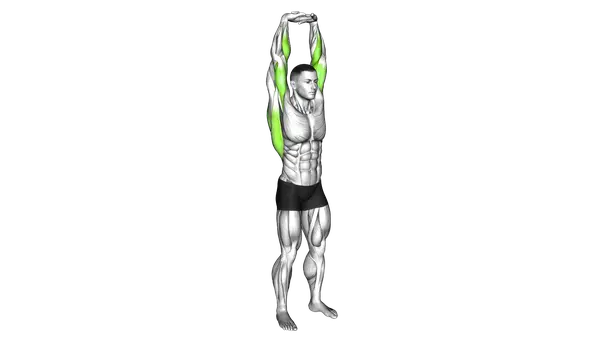
Extension Of Arms In Vertical Stretch
The Extension of Arms in Vertical Stretch offers a gentle yet effective way to open the shoulders and create space in the often-compressed front and side deltoid muscles. This accessible movement is perfect for beginners looking to improve upper body mobility without complex techniques or equipment. As you reach upward, the front deltoids (which frequently tighten from daily activities like computer work and driving) experience a much-needed release and lengthening. The beauty of this stretch lies in its versatility. Whether you're warming up before an intense shoulder workout, cooling down after upper body training, or simply taking a break during a long day of desk work, this movement delivers immediate relief to the shoulder complex. The vertical nature of the stretch works against gravity, creating natural resistance that helps improve shoulder mobility over time. For those in recovery phases or dealing with minor shoulder discomfort, this gentle stretching motion can promote blood flow to the deltoid region without aggravating sensitive tissues. The movement encourages synovial fluid movement within the shoulder joint, potentially reducing stiffness and supporting the body's natural healing processes. This stretch particularly shines as part of a comprehensive mobility routine, as it directly addresses the limited overhead range of motion many people develop through modern lifestyles. Regular practice can progressively improve shoulder function, potentially reducing the risk of impingement issues and creating better movement patterns for everyday activities and athletic endeavors. Remember that consistency trumps intensity with this stretch. A gentle, mindful approach performed regularly will yield better results than aggressive, occasional stretching. The Extension of Arms in Vertical Stretch represents a fundamental movement pattern that supports shoulder health, posture improvement, and upper body function: making it a valuable addition to any fitness regimen regardless of your experience level or specific goals.
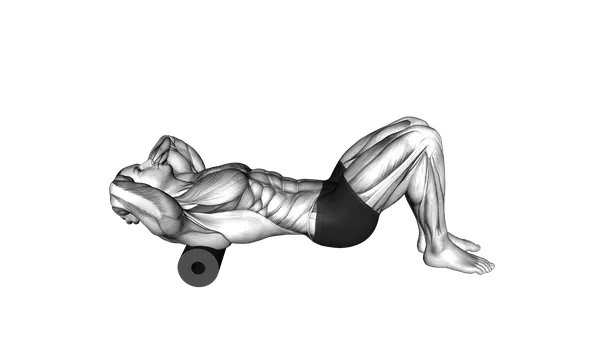
Foam Roll Upper Back
The Roll Upper Back is a gentle yet highly effective recovery technique that targets the trapezius muscles and rear deltoids, making it an excellent addition to any cool-down routine. This beginner-friendly mobility exercise helps release tension that accumulates in the upper back throughout the day, whether from desk work, training, or general stress. The rolling motion helps to improve blood flow to these areas, facilitating faster recovery and promoting better posture. As a stretching modality, this technique works by applying controlled pressure to the trapezius muscles, gradually easing tightness and enhancing flexibility in the upper thoracic region. The beauty of this exercise lies in its simplicity and accessibility – it requires minimal equipment and can be performed virtually anywhere as part of your recovery protocol. Regular implementation can lead to decreased muscle soreness and improved range of motion in your shoulders and neck. Many fitness enthusiasts underestimate the importance of targeted mobility work for the upper back, yet this area often stores significant tension, particularly for those engaged in pushing movements like bench press or overhead exercises. The Roll Upper Back serves as an excellent counterbalance, helping to maintain muscular equilibrium between the anterior and posterior chain. For beginners especially, developing this habit early in their fitness journey can prevent compensatory patterns that might otherwise lead to discomfort or injury. The rear deltoids, which play a crucial role in shoulder stability and posture, particularly benefit from this stretching technique. When incorporated into a consistent cool-down routine, this exercise can help mitigate the forward-rounded shoulder position common in our technology-driven society. Research suggests that such mobility work not only improves immediate comfort but can contribute to long-term joint health and functional movement quality. Remember that recovery isn't just an optional component of fitness – it's an essential element that allows your body to adapt and grow stronger. The Roll Upper Back represents a simple yet powerful tool in your recovery arsenal that pays dividends in both performance and everyday comfort.
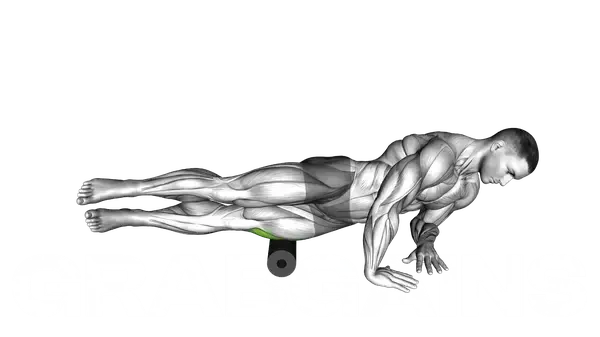
Foam Roller Tensor Fasciae Latae (TFL) Release
The Foam Roller Tensor Fasciae Latae Release is an effective way to relieve tension in the front and outer part of your hips. This small but important muscle, the tensor fasciae latae, works alongside the hip flexors and the iliotibial (IT) band to stabilize your pelvis during movement. Because it’s active in almost every lower-body exercise and even while walking or sitting, it often becomes overworked and tight. Using a foam roller helps reduce this tension, improving hip mobility and comfort during squats, running, or daily activities.When used before training, this release prepares your hips for movement by increasing blood flow and reducing stiffness in the connective tissue around the TFL and IT band. After workouts, it helps accelerate recovery by easing muscle tightness and improving circulation in the hip region. Regularly including this technique in your mobility routine can help prevent imbalances and reduce discomfort around the hips and knees.The strength of this mobility exercise lies in its simplicity. By targeting the tensor fasciae latae directly, you’re not only improving local flexibility but also promoting better movement patterns through the entire hip complex. Releasing tension in this area often eases strain on neighboring muscles such as the glutes, hamstrings, and lower back, leading to smoother, more efficient movement.Whether you’re new to foam rolling or experienced with recovery tools, the Foam Roller Tensor Fasciae Latae Release is easy to learn and self-regulated — you control the pressure and range. A few minutes of consistent practice can lead to noticeably freer hips, improved posture, and a lower risk of overuse injuries, proving that small, targeted recovery habits can make a big difference in overall performance.
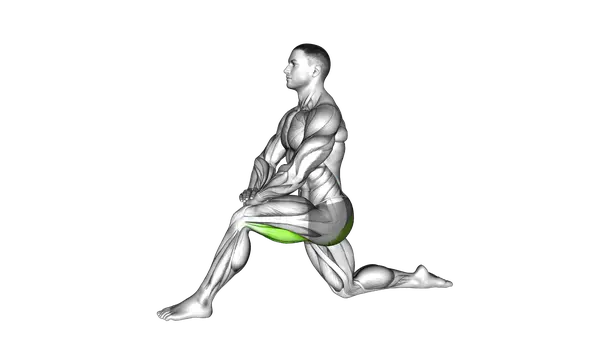
Hip Flexor Stretch (Kneeling)
The kneeling hip flexor stretch stands as a cornerstone movement for anyone looking to improve mobility and address the tightness that develops from our modern sedentary lifestyle. This beginner-friendly stretch targets the hip flexors: a group of muscles that often become shortened and restricted from prolonged sitting at desks, in cars, or on couches. As part of your recovery routine, cool-down sequence, or even during your warm-up, this stretch helps release tension in the anterior hip region, creating length in muscles that commonly contribute to postural issues and lower back discomfort. The gentle yet effective nature of this stretch makes it accessible for those new to fitness while remaining valuable for seasoned athletes who need to maintain mobility. The hip flexors, including the iliopsoas, rectus femoris, and sartorius, play a crucial role in everyday movement patterns and athletic performance alike. When these muscles become chronically tight, they can pull the pelvis into an anterior tilt, potentially leading to compromised movement mechanics and discomfort. Regular implementation of this stretch helps counteract these effects, supporting better posture and movement quality. What makes this stretch particularly valuable is its versatility within a fitness program. As a mobility exercise, it helps increase your functional range of motion, while as a stretching technique, it promotes tissue extensibility and relaxation. Whether you're preparing for a workout or unwinding afterward, this movement serves as an excellent reset for the hip complex. The beauty of this stretch lies in its simplicity and effectiveness. Without requiring any equipment, it can be performed virtually anywhere: at home, in the gym, or even at the office during a quick break. This accessibility makes it easy to incorporate into your routine, providing consistent relief for tight hips that might otherwise limit your movement potential or contribute to discomfort throughout your day.
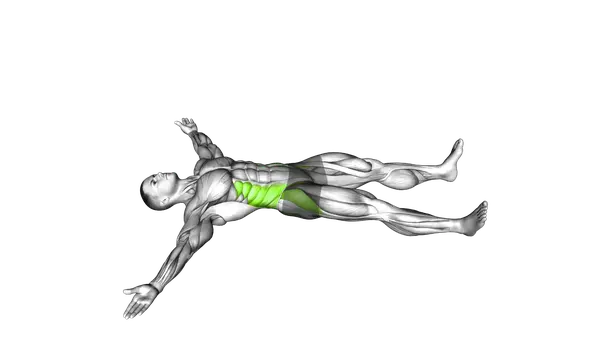
Iron Cross Stretch
The Iron Cross Stretch offers a wonderfully effective way to open up the chest and shoulders, making it an excellent addition to any fitness routine, especially for beginners looking to enhance their mobility. This fundamental stretch primarily targets the pectoral muscles and anterior deltoids (front shoulders), which tend to become tight from daily activities like computer work, driving, or even from chest-focused workouts. As a recovery tool, the Iron Cross Stretch helps counteract the natural forward-rounding posture many of us develop throughout the day. By creating a gentle but effective stretch across the chest wall, it helps release tension in these chronically shortened muscles and can significantly improve posture over time when practiced regularly. What makes this stretch particularly valuable is its versatility within a workout routine. When used during a warm-up, it helps prepare the chest and shoulder muscles for more intense activity by increasing blood flow and creating mobility in the shoulder joint. As part of a cool-down protocol, it assists in reducing post-workout muscle soreness and helps maintain long-term flexibility in these important upper body areas. The beauty of the Iron Cross lies in its simplicity yet profound effect on upper body mobility. Regular practice can help correct muscular imbalances between the chest and upper back, potentially reducing the risk of shoulder injuries. For those who spend long hours at a desk, this stretch can provide immediate relief from the sensation of tightness across the front of the shoulders. While gentle enough for beginners, the Iron Cross Stretch offers scalable intensity, allowing you to adjust the degree of stretch based on your current flexibility level. Consistent incorporation of this stretch into your mobility work can lead to noticeable improvements in shoulder range of motion, making everyday movements feel more fluid and comfortable while enhancing performance in various upper body exercises.
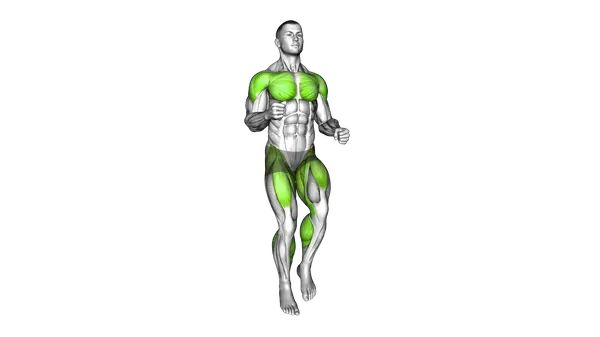
Jog in place
Jogging in place might seem like a basic movement, but it's a surprisingly versatile exercise that delivers impressive cardio benefits without requiring any equipment or space. This accessible exercise mimics the natural running motion while staying in a fixed position, making it perfect for indoor workouts or when time and space are limited. Jogging in place serves as an excellent entry point for those new to fitness. The beauty of this exercise lies in its simplicity and adaptability. For beginners, it provides a low-impact introduction to cardio that can be modified based on fitness level. The familiar movement pattern requires minimal coordination, allowing newcomers to focus on building endurance rather than mastering complex techniques. As a cardiovascular exercise, jogging in place elevates your heart rate effectively, improving heart health and circulation throughout the body. Regular sessions can help decrease resting heart rate over time, a key indicator of cardiovascular fitness. The sustained rhythmic movement engages multiple muscle groups simultaneously, creating an efficient calorie-burning activity that supports weight management goals. Jogging in place transitions seamlessly between workout phases. As a warm-up, it gradually increases body temperature and prepares muscles for more intense activity. In HIIT protocols, it can serve as either a high-intensity interval or an active recovery period depending on execution speed. Post-workout, a gentle jog helps gradually lower heart rate during cool-down, facilitating better recovery. Consistent jogging in place contributes significantly to endurance building. The exercise improves oxygen utilization and delivery throughout the body, enhancing your aerobic capacity over time. This increased stamina transfers to daily activities and other exercises, creating a foundation of fitness that supports overall physical performance and longevity.
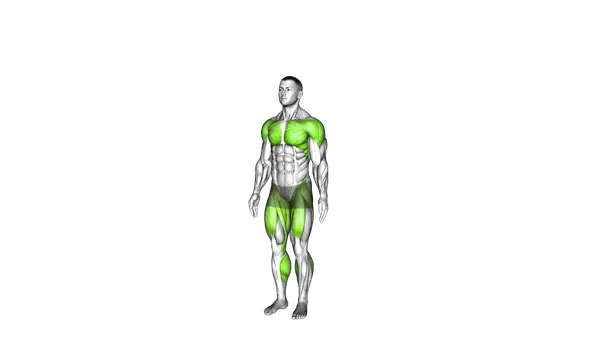
Jumping Jack
The jumping jack stands as one of fitness's most recognizable and versatile movements, making it perfect for beginners while still delivering results for experienced exercisers. This classic cardio exercise elevates your heart rate quickly while engaging multiple muscle groups simultaneously, proving that sometimes the simplest movements yield the most impressive benefits. As a cornerstone of cardio training, jumping jacks efficiently burn calories while improving circulation and respiratory function. Their rhythmic nature helps establish a steady breathing pattern, making them particularly valuable for those new to fitness who are still developing their cardio base. The exercise's low-impact variation—keeping feet closer to the ground with smaller movements—offers an accessible entry point for beginners concerned about joint stress. Jumping jacks shine brilliantly within HIIT protocols, warm-up routines, and cool-down sequences alike. In high-intensity interval training, they serve as an excellent spike exercise that quickly elevates heart rate between strength movements. When incorporated into warm-ups, jumping jacks prepare the body by increasing core temperature, enhancing joint mobility, and priming the nervous system for the workout ahead. During cool-downs, a gentler execution helps gradually return the heart rate to resting levels while maintaining blood flow to working muscles. The beauty of jumping jacks lies in their dual contribution to cardiovascular health and muscular endurance. Regular incorporation helps strengthen the heart muscle while improving oxygen delivery throughout the body. Meanwhile, the repetitive nature challenges muscular staying power, particularly in the shoulders, calves, and core stabilizers that must work continuously throughout the movement. Research suggests that simple, accessible exercises like jumping jacks promote better adherence to fitness routines, especially among beginners. Their familiarity removes barriers to entry while their effectiveness ensures continued results. Whether used as a standalone conditioning exercise or integrated into a comprehensive fitness program, jumping jacks deliver impressive cardiovascular benefits without requiring complex instruction or specialized equipment.
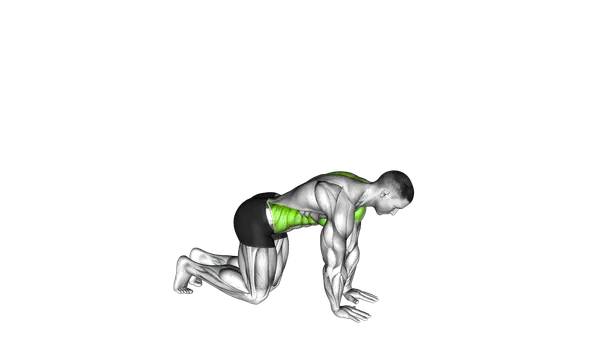
Kneeling Back Rotation Stretch
The Kneeling Back Rotation Stretch is a gentle yet effective mobility exercise that targets both the erector spinae muscles along your spine and your abdominal muscles. This beginner-friendly movement serves multiple purposes in your fitness routine, whether you're warming up, cooling down, or focusing on recovery. When incorporated into your warm-up routine, this stretch helps prepare your spine for the movements ahead by gradually increasing blood flow to the back muscles and gently activating your core. The rotational component wakes up the connective tissues between your vertebrae, reducing the risk of strain during your workout. As a cool-down or recovery exercise, the Kneeling Back Rotation creates space between the vertebrae that may have been compressed during physical activity. This decompression effect can provide immediate relief if you've been doing exercises that load the spine, such as squats or deadlifts. The controlled twisting motion helps release tension that builds up in the erector spinae throughout the day or during intense training sessions. What makes this stretch particularly valuable is its focus on improving rotational mobility in the thoracic spine (mid-back), an area that tends to become stiff from prolonged sitting or repetitive movements. Regular practice can enhance your overall spinal health and potentially improve performance in rotational sports like golf, tennis, or baseball. The beauty of the Kneeling Back Rotation lies in its simplicity and accessibility. It requires no equipment and can be performed virtually anywhere. As a foundational mobility exercise, it teaches proper segmentation of the spine from the hips, a crucial skill for maintaining back health in everyday movements. Many people find this stretch provides a pleasant sensation of release along the spine, making it a satisfying addition to any stretching routine. The gentle nature of the movement makes it appropriate even for those dealing with mild back discomfort, though as with any exercise, proper form remains essential for maximum benefit.
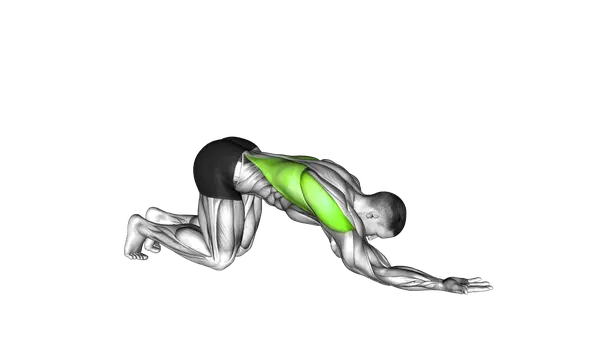
Kneeling Lat Stretch
The Kneeling Lat Stretch offers a gentle yet effective way to release tension in the latissimus dorsi muscles, those large, fan-shaped muscles spanning the sides of your back. This beginner-friendly stretch requires no equipment, making it perfect for anyone looking to improve upper body mobility regardless of fitness level. The stretch specifically targets the lats, which often tighten from everyday activities like sitting at a desk, driving, or even from intense upper body workouts. When incorporated into your recovery routine, the Kneeling Lat Stretch helps alleviate back stiffness and promotes better posture by releasing the muscles that, when tight, can pull your shoulders forward and down. This makes it an excellent addition to your cool-down protocol after any workout that taxes the upper body, particularly activities like swimming, rowing, or climbing that heavily engage the lats. The beauty of this stretch lies in its versatility – it's equally valuable as part of a warm-up sequence, preparing your lats for the work ahead by increasing blood flow and improving range of motion before activities that require overhead reaching or pulling movements. Regular practice can enhance your mobility for everyday tasks and athletic performance alike. Many fitness enthusiasts overlook the importance of lat mobility, focusing instead on more obvious muscle groups. However, the lats connect to multiple areas including your arms, spine, and pelvis, making their flexibility crucial for proper movement patterns throughout the body. Tight lats can contribute to shoulder pain, limited overhead mobility, and even affect breathing mechanics during exercise. Incorporating this stretch into your stretching and mobility work just 2-3 times per week can yield noticeable improvements in how your upper body feels and moves. The Kneeling Lat Stretch represents a simple yet powerful tool in your fitness arsenal, offering significant benefits for minimal time investment – perfect for the beginner looking to build a solid foundation of mobility work.
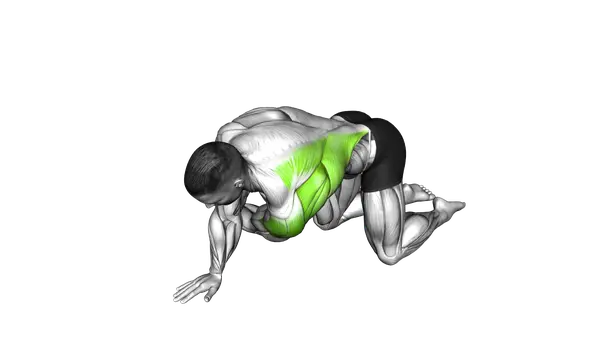
Kneeling T Spine Mobility
Kneeling T Spine Mobility is a gentle yet effective beginner-friendly exercise that primarily targets the erector spinae muscles along your spine and engages the abdominal muscles for stability. This mobility-focused movement serves as an excellent addition to your recovery protocol, cool-down routine, or as part of a thorough warm-up before more intense training. As a foundational mobility exercise, the Kneeling T Spine Mobility helps address one of the most common issues in today's sedentary society: thoracic spine stiffness. Many people experience limited rotation in their mid-back region due to prolonged sitting and hunching over devices, which can lead to poor posture, reduced athletic performance, and even contribute to shoulder and neck pain over time. This stretching technique works wonders for improving your thoracic rotation, which is essential for everyday movements and athletic endeavors alike. From swinging a golf club to reaching for items on a high shelf, proper t-spine mobility allows for more efficient movement patterns and reduced compensation from other areas of your body. The exercise creates space between your vertebrae, potentially alleviating pressure on spinal discs and surrounding tissues. What makes the Kneeling T Spine Mobility particularly valuable is its accessibility: requiring no equipment and minimal space, it can be performed virtually anywhere. The controlled nature of this movement makes it appropriate for nearly all fitness levels, though those with existing back conditions should always consult a healthcare provider first. Incorporating this mobility exercise regularly into your fitness routine can yield impressive benefits beyond just spinal health. Enhanced thoracic mobility often translates to improved breathing capacity, better shoulder function, and even enhanced core stability. As with any mobility work, consistency is key: even a minute or two daily can lead to noticeable improvements in how your upper body moves and feels over time.
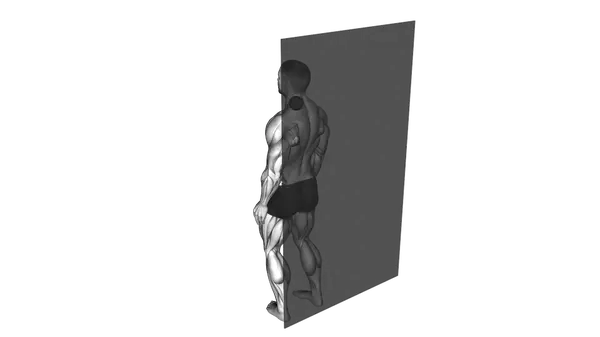
Levator Scapula Ball
The Levator Scapula Ball technique offers a targeted approach to addressing one of the most common areas of tension in today's desk-bound world. This intermediate-level mobility exercise specifically targets the levator scapulae muscle, which runs from the upper scapula to the cervical spine, alongside engaging the trapezius muscles and neck. When this muscle becomes chronically tight: often from prolonged sitting, computer work, or stresss and it can contribute to that characteristic "computer neck" pain and limited range of motion many experience. What makes this technique particularly effective is its versatility across training phases. As a warm-up element, it helps prepare the upper body for overhead movements and exercises requiring thorough shoulder mobility. During recovery or cool-down sessions, it assists in releasing accumulated tension, potentially reducing post-workout stiffness and encouraging better tissue quality in an area notorious for developing trigger points. The beauty of using a ball for this purpose lies in its ability to provide specific, sustained pressure that helps release fascial restrictions and muscular knots that hands alone might struggle to address effectively. This approach allows for a form of self-massage release that can be adjusted based on individual sensitivity and need: making it accessible despite being classified at the intermediate level. Research suggests that targeted mobility work on the levator scapulae can contribute to improved posture, reduced cervical pain, and enhanced overhead movement patterns. Regular implementation, even for brief 2-3 minute sessions, may help counteract the negative postural adaptations common in our technology-driven environment. For those experiencing chronic neck tension or anyone engaged in activities requiring significant upper body engagement, incorporating this technique into a comprehensive mobility routine represents a evidence-based approach to maintaining tissue quality and function. The levator scapulae, despite being relatively small, plays an outsized role in neck comfort and upper body mechanics, making this focused attention well worth the effort.

Low Lunge Twist
The Low Lunge Twist offers beginners an accessible yet effective way to open multiple areas of the body simultaneously, making it a versatile addition to any fitness routine. This gentle posture targets the glutes, quads, and abs while providing a therapeutic stretch that feels particularly rewarding after a long day or intense workout session. As you settle into the lunge position, the twist element activates your core muscles while gently rotating your spine, creating space between vertebrae that often become compressed during daily activities. Your glutes engage to stabilize your hips, while your quadriceps work to maintain proper alignment of your forward leg. The multidimensional nature of this movement makes it particularly effective for addressing the physical limitations many people develop from prolonged sitting. Perfect for recovery sessions, the Low Lunge Twist helps release tension that builds up in the hip flexors and lower back. When incorporated into a cool-down routine, it allows your body to gradually transition from high-intensity movement to a state of rest, preventing that stiff feeling that sometimes follows vigorous exercise. Alternatively, this posture serves admirably as a warm-up element, gently preparing your body for more demanding activities by increasing blood flow to major muscle groups. The stretching benefits extend beyond just the primary muscles, reaching into the often-neglected connective tissues that can limit your overall mobility. Regular practice can improve your rotation capabilities and enhance the functional range of motion in your hips and thoracic spine. This translates to better performance in both athletic endeavors and everyday movements. Whether you're looking to counteract the effects of a sedentary lifestyle or complement a more intense training regimen, the Low Lunge Twist delivers accessible benefits that accumulate over time, making it a valuable component of any well-rounded fitness approach.
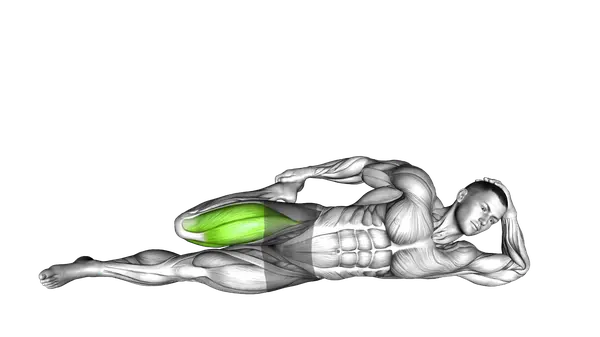
Lying (Side) Quadriceps Stretch
The Lying (Side) Quadriceps Stretch offers an excellent way to release tension in your quads while providing a deeper stretch than many standing variations. This beginner-friendly stretch targets the quadriceps muscles along the front of your thighs, making it perfect for recovery sessions, cool-downs after intense workouts, or as part of your warm-up routine when performed gently. What makes this stretch particularly effective is the side-lying position, which stabilizes your pelvis and allows for better isolation of the quadriceps muscle group. By stretching in this position, you're able to minimize compensation patterns that often occur during standing quad stretches, where people tend to arch their back or tilt their pelvis to avoid the full stretch sensation. The horizontal position also takes balance out of the equation, making this an accessible option for those with stability concerns. The stretch delivers significant mobility benefits for the hip flexors and knee joint in addition to the primary quad stretch. Regular practice can help counteract the tightness that develops from prolonged sitting, running, cycling, or strength training. Many athletes find that incorporating this stretch into their routine helps reduce anterior knee discomfort and improves overall movement quality in squats and lunges. For those engaged in regular strength training or high-impact activities, this stretch serves as valuable maintenance work, helping to preserve tissue quality and joint function. The passive nature of the position allows you to truly relax into the stretch, potentially achieving greater range of motion than more active stretching variations. While simple in execution, the Lying Side Quadriceps Stretch remains a staple in flexibility programs across fitness levels. Its effectiveness comes from its simplicity – sometimes the most basic approaches deliver the most reliable results when it comes to improving mobility and supporting recovery.
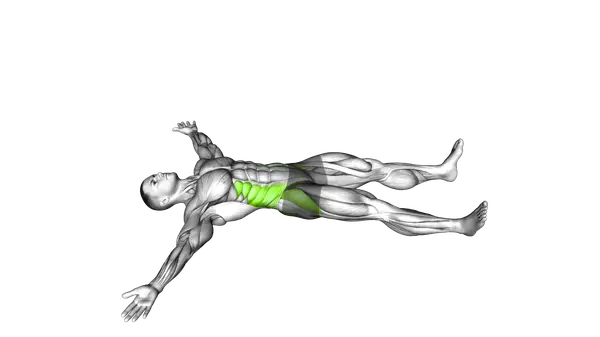
Lying Cross Over Knee Pull Down Stretch
The Lying Cross Over Knee Pull Down Stretch offers a gentle yet effective way to release tension in the glutes and abs, making it perfect for beginners looking to enhance their flexibility and mobility. This accessible movement serves multiple purposes within your fitness routine, functioning beautifully as part of your warm-up sequence to prepare the body for more intense activity, during recovery periods between training sets, or as a soothing cool-down element after your workout. As you settle into this stretch, you'll feel a pleasant opening sensation across your glutes, while simultaneously engaging your abdominal muscles. The cross-body component creates a gentle rotational element that helps address those hard-to-reach areas where tension often accumulates during daily activities or intense workouts. Your body will thank you for the attention to these commonly tight regions. This stretch exemplifies how effective mobility work doesn't always require complex movements or advanced flexibility. The gentle nature of this position makes it accessible even when muscles feel particularly tight, allowing you to gradually increase your range of motion without forcing anything. Many fitness enthusiasts incorporate this movement into their regular routine to maintain hip mobility and core flexibility. What makes this stretch particularly valuable is its ability to counteract the effects of prolonged sitting, which many of us experience in our daily lives. The cross-body component specifically targets areas that become compressed and shortened during desk work or commuting. Regular practice can help restore natural movement patterns and potentially reduce discomfort associated with sedentary behaviors. Whether you're an active athlete looking to maintain mobility or someone simply wanting to feel more comfortable in your body, this stretch delivers remarkable benefits with minimal time investment. Its dual focus on the glutes and abs addresses two powerhouse areas that influence countless other movements in both exercise and everyday life, making it a smart addition to virtually any fitness regimen.
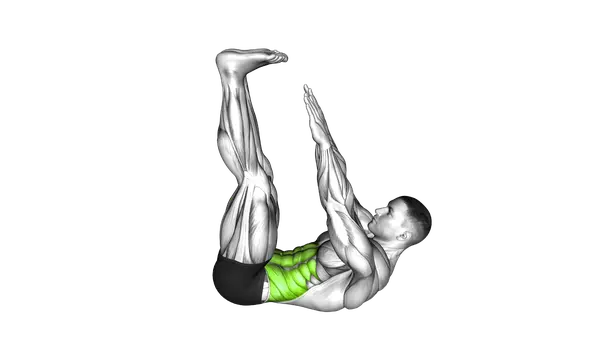
Lying Toe Touch
The Lying Toe Touch is a versatile and gentle exercise that serves multiple purposes in a fitness routine, making it perfect for beginners looking to strengthen their core or anyone needing an effective stretch during warm-ups or cool-downs. This movement primarily targets the abdominal muscles while also providing a beneficial stretch along the posterior chain. As a beginner-friendly exercise, the Lying Toe Touch requires no equipment and can be performed on any comfortable surface, making it accessible for home workouts or gym sessions alike. The movement creates a connection between your upper and lower body, challenging your core stability while improving coordination and body awareness. This exercise engages multiple abdominal muscles simultaneously, including the rectus abdominis (the "six-pack" muscles) and the transverse abdominis (your deep core stabilizers). The controlled nature of the movement helps develop core strength without placing excessive strain on the lower back, which is particularly important for those new to fitness or returning after a break. When incorporated into your warm-up routine, the Lying Toe Touch helps increase blood flow to your core and gradually prepares your body for more intense exercises. The gentle stretching action helps improve flexibility in your hamstrings and lower back, establishing better movement patterns for the workout ahead. As a cool-down or recovery exercise, this movement helps release tension built up during more strenuous activities. The stretching component promotes muscle recovery by increasing circulation to worked muscles while the controlled breathing associated with the exercise helps transition your body into a more relaxed state. Regular practice of the Lying Toe Touch contributes to improved posture and spinal alignment, as strengthening the core muscles provides better support for your back in everyday activities. The combination of strengthening and stretching makes this simple exercise a valuable addition to any fitness regimen, regardless of your experience level or specific goals.
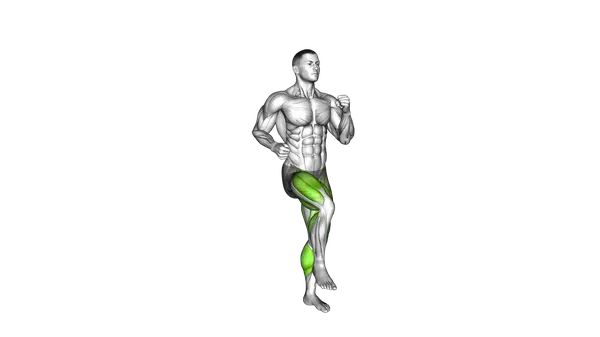
Marching On Spot
Marching on the spot offers a perfect entry point for beginners looking to elevate their heart rate without complex movements or equipment. This foundational exercise primarily engages your quadriceps and calves, creating a gentle but effective lower body workout while simultaneously boosting your cardiovascular system. What makes marching on the spot so versatile is its adaptability across different workout segments. Whether you're incorporating it into a high-intensity interval training (HIIT) circuit for quick bursts of movement, using it to prepare your body during a warm-up, or gradually decreasing your heart rate during a cool-down phase, this exercise seamlessly transitions between roles. The beauty of this movement lies in its endurance-building potential. By consistently performing marching on the spot for extended periods, you'll notice improvements in your aerobic capacity and muscular stamina. The steady, rhythmic nature of the exercise elevates your heart rate into the cardio training zone, making it an effective calorie-burning activity that can be sustained longer than more intense exercises. Research shows that even simple movements like marching can significantly impact your metabolic rate and contribute to improved fitness levels over time. The accessibility of this exercise makes it particularly valuable for those beginning their fitness journey or returning after a break. No specialized coordination or previous experience is required: just a willingness to move. For those tracking fitness metrics, marching on the spot provides a reliable baseline activity that can help establish your working heart rate zones and monitor improvements in recovery time as your fitness progresses. The minimal impact nature of the movement makes it sustainable for longer sessions without placing excessive stress on your joints, making it a smart addition to any well-rounded fitness program.
Promote muscle relaxation, flexibility and heart rate regulation
Training goals for cool-down and recovery
Cool-down exercises help lower your heart rate gradually, restore muscle length, and improve circulation. This aids in the removal of metabolic waste products like lactic acid, reducing muscle soreness and stiffness. A proper cool-down routine helps prevent injuries, supports better flexibility, and speeds up recovery by encouraging blood flow to the muscles, preparing them for future activity.
Stretch, breathe, and focus on muscle lengthening and relaxation
Best cool-down exercises for muscle recovery and flexibility
The best cool-down exercises include static stretching, yoga poses, and deep breathing exercises. Focus on major muscle groups like hamstrings, quadriceps, calves, shoulders, and back. Common cool-down stretches include forward bends, hip flexor stretches, chest openers, and calf stretches. Light aerobic exercises like walking or gentle cycling can help keep blood circulating while your muscles begin to relax. Stretching each muscle group for 20–30 seconds at the end of your workout helps maintain flexibility and improve muscle recovery.
Stretch and relax with minimal equipment or simple tools
Equipment options for cool-down exercises
Cool-down exercises can be performed with little to no equipment. A yoga mat can provide comfort during floor stretches, while a foam roller is a great tool for self-myofascial release (SMR) to relieve muscle tightness. Resistance bands can also assist with gentle stretching, particularly for the hips, shoulders, and legs. If you prefer a deeper release, massage tools like massage guns or therapy balls can target specific tight areas, aiding in faster recovery.
Integrate cool-down exercises into full-body and split routines
Cool-down related workouts
A proper cool-down should be a consistent part of every workout. Ideally, it’s done for 5–15 minutes after intense activity. These sessions don’t need to be long, but they’re crucial for preventing stiffness and promoting muscle recovery. If you’re training multiple days in a row, prioritize cool-down exercises to keep your muscles in optimal condition. The app helps you integrate cool-down routines into your training plan, ensuring your body recovers efficiently and stays flexible for the next workout.
Frequently asked questions about cool-down exercises
Stretching is often a part of the cool-down process, but cool-down exercises include more than just stretches. A cool-down focuses on reducing intensity, lowering heart rate, and releasing muscle tension, while stretching is specifically designed to increase flexibility and muscle length. Both are important for recovery, but cool-downs also involve deep breathing and light movement to regulate the body after exercise.
While it’s tempting to skip the cool-down, doing so can lead to tight muscles, soreness, and increased injury risk. If you’re short on time, focus on just a few minutes of stretching and light walking or cycling. Prioritizing cool-down exercises consistently will help improve flexibility, reduce soreness, and make future workouts more effective.
A cool-down typically lasts 5–15 minutes. This allows your heart rate to return to normal, muscles to relax, and flexibility to be maintained. It’s important to dedicate enough time for stretching and light aerobic work to ensure a complete cool-down that supports recovery.
The best cool-down exercises include static stretches like hamstring stretches, hip flexors, and calf stretches, along with yoga poses like downward dog and child’s pose. Foam rolling or using a massage gun can further help to release tight muscles. Additionally, light aerobic work, such as walking, helps bring the heart rate down gradually and prevents blood from pooling in the muscles.
Yes, cool-down exercises promote better circulation, helping to remove waste products like lactic acid from muscles. Stretching and foam rolling help reduce muscle tightness and improve flexibility. While cool-downs won’t eliminate soreness completely, they significantly reduce the intensity of delayed onset muscle soreness (DOMS).